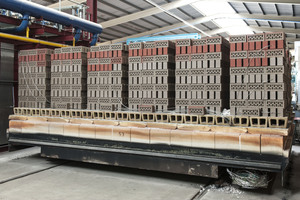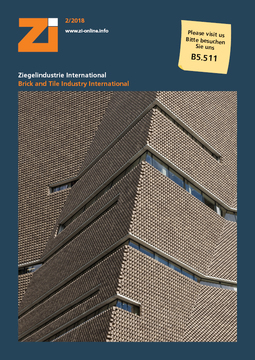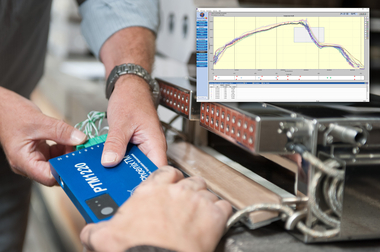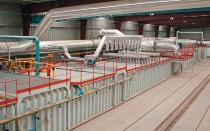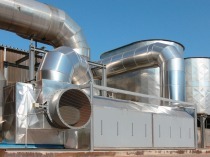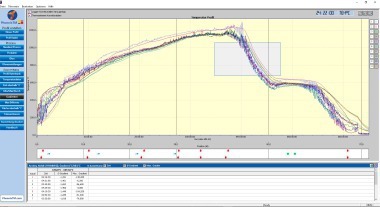Temperature monitoring in ceramics processes
Temperature profiling for quality assurance in industrial kilns and furnaces is common practice in almost all heat treatment applications, and in the ceramics industry, too.
While in the past, long trailing thermocouples were used that were complicated in terms of handling, time-consuming and expensive, today it is possible to measure the temperatures directly in the process and at the product with the help of special “hot boxes”. PhoenixTM has developed these heat protection boxes that are designed specially for use under tunnel kiln cars and in roller hearth kilns. Thanks to their compact design, they can be simply attached under the kiln cars. The removable connection boxes can be attached separately. This saves on thermocouple lines and facilitates connection of the sensors. These are positioned in the ware setting and record the temperatures in real-time process conditions. The determined data are saved in a robust, water-tight and dust-resistant multi-channel data logger and can be sent by means of RF telemetry directly to the user’s PC. With the use of PhoenixTM repeaters, the receiving PC can be far away from the kiln without the need to lay long cables to a receiver at the kiln.
The PhoenixTM datalogger has been specially developed to meet requirements in rough industrial environments. With max. 20 measurement points and a 3.8 mill. data point memory, a detailed picture of the firing cycle can be displayed.
www.phoenixtm.de

